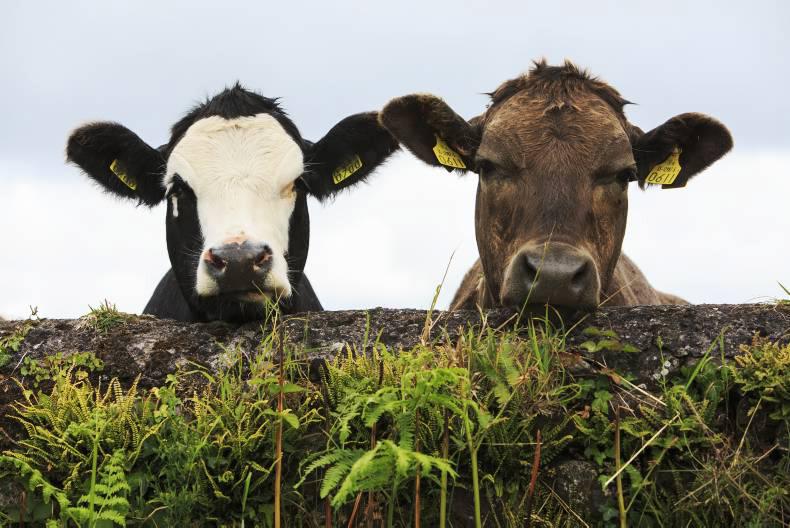ABP’s new payment grid for cattle in England will have implications for Irish farmers. The Irish Farmers Journal has obtained a copy of the payment grid that ABP recently put in place, along with the introduction of mechanical grading in all its British factories earlier this month.
Farmers who have non-UK origin stock in their herd, whether imported calves from Ireland or milk cows from mainland Europe, will be cut by £1 (€1.41)/kg.
Slashing the value of imported stock by a full £1 (€1.41)/kg is exceptionally harsh, particularly when the cut in Northern Ireland is typically £80 (€113) per head in factories taking Irish cattle. ABP in NI is not taking southern cattle.
The grades ABP uses for its base price range from R= 2+ / R-3- to R=4=. There are small increments for cattle grading better than this, ranging from 5p (7c)/kg to 20p (28c)/kg on U+ 2+ / 4=. E grades can make up to 35p (49c)/kg over base but these are extremely rare.
Severe cuts are in place for cattle not making the base grade. Under-finished quality U+ cattle are hit by 25p (35c)/kg below base, O=1= are hit by a 80p (€1.13)/kg penalty.
Cuts go as far as £1.50p (€2.12)/kg on plain under-finished or over-fat cattle, suggesting little interest in dairy-bred cattle.
ABP has also put in place cuts for cattle over 420kg, starting with 4p/kg between 420kg to 430kg, 8p/kg on 430kg to 440kg, and 12p (16c)/kg on 440kg to 450kg. This is the maximum limit; anything over 450kg will just be paid to 450kg and any weight above that will not be paid for.
There is also a structure for deductions for underweight cattle under 260kg. Again, cuts are in 10kg gaps with 250kg to 260kg cut 20p (28c) on grades E to O+, 40p on anything less than O grades. These cuts increase by a further 20p (28c)/kg for each 10kg lighter.
To get on to this scale, cattle have to be farm-assured, resident on the last farm for at least 30 days and not have had more than four farm moves.
Where cattle have had more than four moves and not spent at least 30 days, they will be cut 10p (14c)/kg. Steers and heifers over 30 months are also taking a hit. Those between 30 and 36 months are being cut 5p/kg while anything over 36 months will be paid at cow base price on the grid. For young bulls, the age range offered is 12 to 16 months. Any young bulls over 16 months will be slashed a massive 75p (€1.06)/kg and if they cross 24 months will be paid at stock bull price.
ABP has also laid out its policy on “insurance”. Any animal that looks unfit prior to slaughter will not be accepted into its insurance scheme and processed entirely at the owner’s risk. Therefore, if all or part of the carcase is condemned post-slaughter, the farmer will not get paid. Insurance is deducted on animals that are considered fit and there is no indication that the farmer presenting cattle has a choice to opt out of this insurance.
Beef labelling
There is a particular problem with mixed origin beef that makes it unattractive to factories and customers alike, and it is a damming indictment that EU beef labelling legislation makes the historic trade in cattle between Ireland and Britain impossible. The three large volume retailers, Sainsbury’s, Tesco and ASDA, plus the large burger chains, work on a policy of buying British or Irish beef, but it must be either-or, it cannot be both.
To achieve either Irish- or UK-origin status, the animal must have spent its entire life in a country and been slaughtered there as well. If it is born and reared in Ireland but finished and slaughtered in the UK, it achieves neither UK nor Irish origin. It becomes mixed origin, or as it has been unkindly described, “nomad”.






 This is a subscriber-only article
This is a subscriber-only article










SHARING OPTIONS: